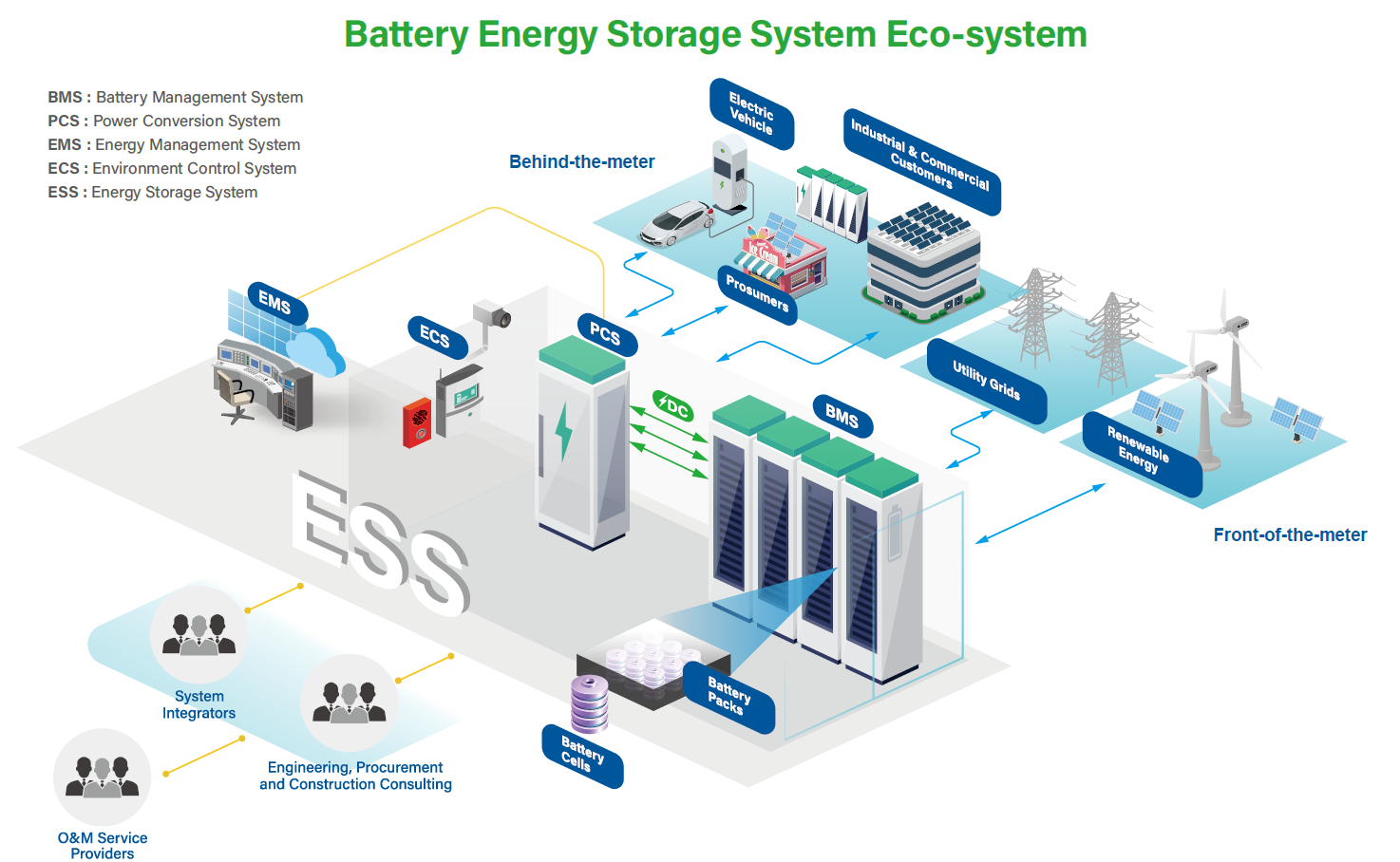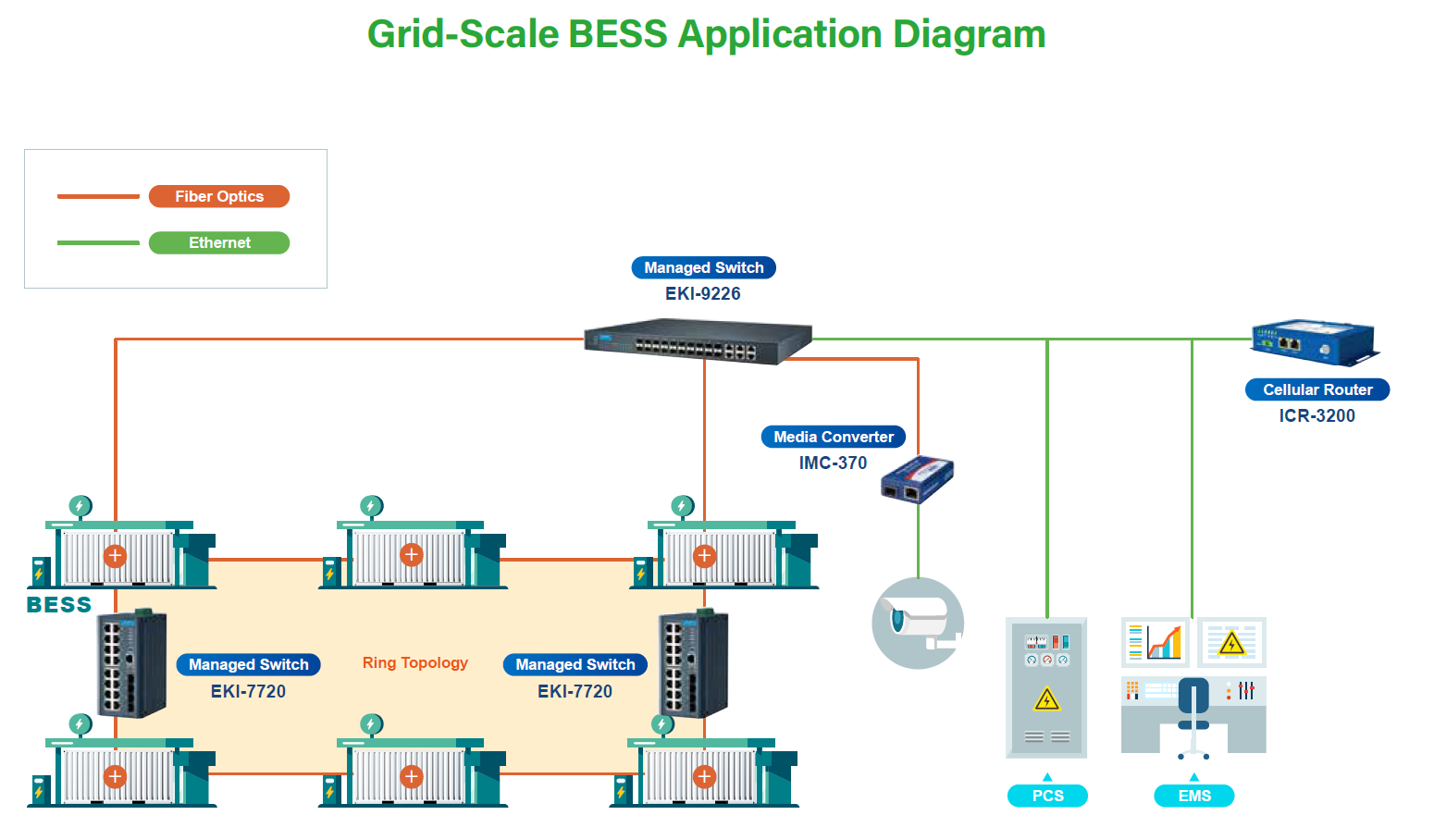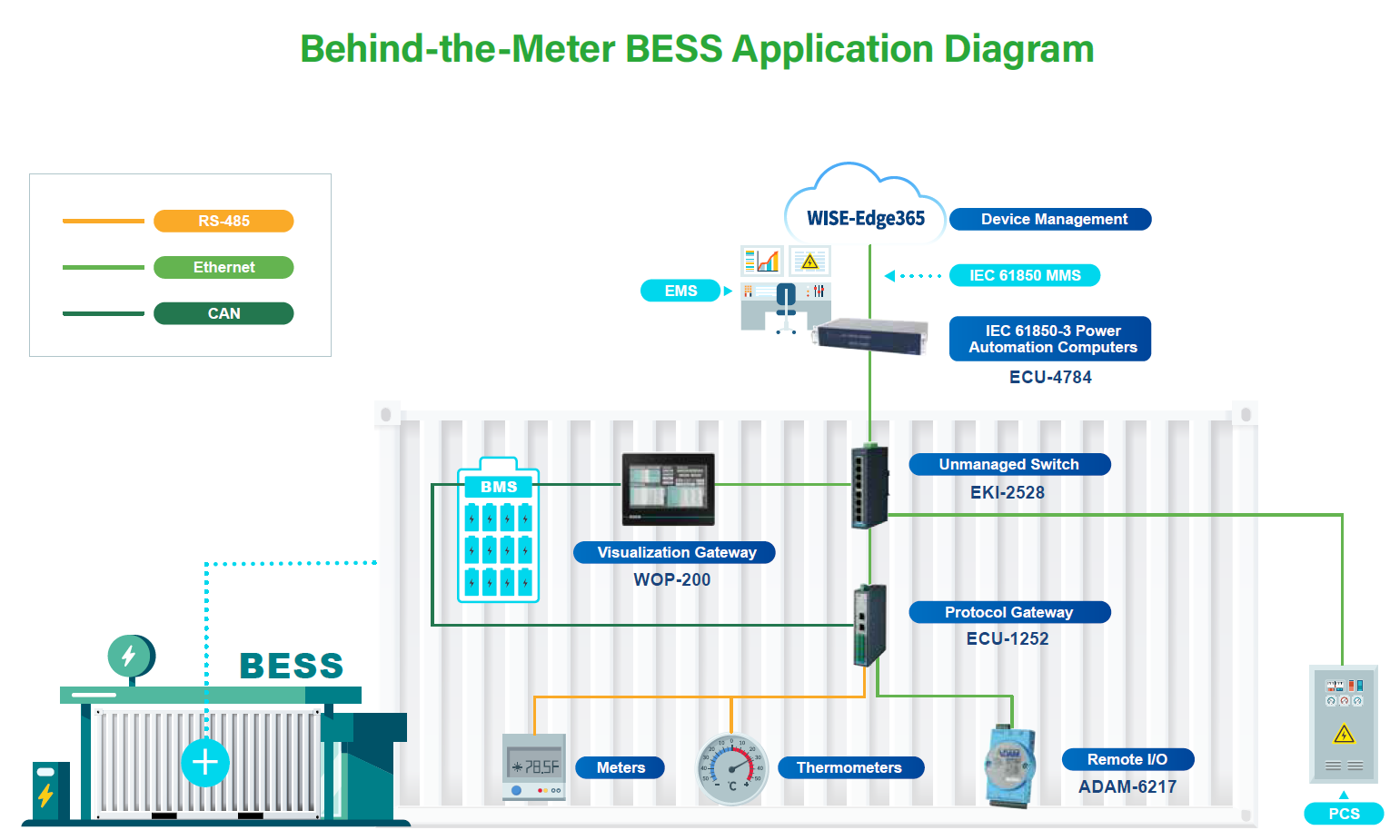Optimising IoT Infrastructure for Efficient Battery Energy Storage Systems (BESS)
Technical Analysis | 21-10-2024 | By Jack Pollard
By Paul O’Shaughnessy, IIoT Sales Director Northern Europe and Energy & Utilities Sector Head, Advantech
Creating a connected IoT infrastructure is crucial for improving the efficiency, security and resilience of a Battery Energy Storage System (BESS). However, achieving these ambitions requires the integration of many carefully selected hardware and software components, including I/O gateways, edge protocol gateways, edge computers and software. Application-specific IoT solutions for BESS can help facilitate the energy industry’s transition towards a successful future driven by digitalisation, decentralisation and decarbonisation, catering to both front-of-meter and behind-meter prosumers.
Green Energy Trends and Opportunities
Grid digitalisation means establishing energy storage solutions that can support the integration of renewable energy into smart, flexible power systems. The effects of digitalisation will have an impact on the whole process, from generation and storage, to transmission, distribution and consumption. If businesses want to take control of energy demands on both sides of the meter, they will need to deploy energy systems capable of real-time AI.
Another trend/opportunity is decentralisation, which will necessitate a major contribution from businesses, especially larger enterprises, in the adoption of self-generation solutions. These solutions will permit businesses to manage their own energy requirements through the construction of micro grids.
In tandem, a key consideration will be partnering with suppliers that can help deliver energy efficiency targets via the deployment, operation and management of renewable energy systems.
The Challenges
BESS cost is always a primary concern, and when implementing an IoT-based BESS, users need to consider costs that include hardware, software, installation and maintenance to reach an estimate of TCO (total cost of ownership). After all, if the system is not profitable, the business model is not sustainable. Simplifying design and maximising system efficiency are key elements of driving profitability. Future scalability also comes into the equation regarding both system success and cost. A scalable BESS is essential for future growth and development.
A well-connected BESS also needs to utilise reliable and secure communication infrastructure, as well as robust computing power that can work autonomously. Connectivity is necessary in both the sensing and network layers – the latter aggregates data from the various IP devices present in the system. During integration, most projects will encounter a multitude of different connectivity interfaces, including serial, one-wire, CAN bus, digital input, analogue I/O, Ethernet and fibre. As a further point, it is necessary to embed network security in multiple layers at each connection point to thwart potential threats. A VPN, firewall and data encryption are among the crucial tools of effective system security.
Data, Data and More Data
To help achieve the optimal system solution, there is a need to achieve real-time data communications, or as close to it as possible. Certain technology providers are spearheading the development of hardware and software that can facilitate the roll-out of integrated renewable energy/BESS solutions. This capability includes the collection of analogue data in solar arrays and wind turbines, as well as in battery management systems (BMS). The BMS is responsible for the real-time monitoring and load control of each battery cell. A BMS typically uses a CAN bus for external communication, with a communication gateway required to convert CAN bus data to Ethernet data. Selecting the right gateway will ensure seamless data transmission and power dispatch to utility grids.
It is also necessary to collect data from the power conversion system (PCS), which serves as the core of electricity scheduling and dispatch because it converts AC and DC power with a focus on real-time control via EtherCAT. Energy storage systems (ESS) and environmental control systems (ECS), which combine the fire and HVAC system, are further data collection targets. This activity even extends to applications in the overall energy management system (EMS), providing a seamless and highly effective offering. The EMS typically includes SCADA software and industrial PCs (IPCs) working together to provide overall monitoring of the energy storage container. Usually, two sets of IPCs provide back-ups of each other for SCADA stability, while a further two sets provide back-ups of each other for database redundancy.

Deep Product Stacks
The latest deep product stacks (both hardware and software) can address the specific needs of key applications, helping to build the ideal solution.
Firstly, one of the key challenges is connecting to devices with both Ethernet and CAN bus across all of the potential applications within a BESS, regardless of their location to the meter. Data requires seamless transfer between BESS functions and applications to maximise performance and efficiency.

In the large grid-scale energy storage field, the BMS, PCS and EMS function in different containers, and each container must maintain data communication at all times to manage charging and discharging. The containers connect using fibre-optic ring topology to enhance network redundancy and ensure the highest stability. By leveraging the latest managed Ethernet switch technology, it becomes possible to connect each BMS and transmit Ethernet signals over fibre-optic cables. This ensures seamless data exchange between distributed BMS containers. On the ring network’s top layer, it is advisable to use IEC-61850-3-certified managed Ethernet switches to connect PCS, EMS and multiple BMS containers.

Another core component is the media converter. Since security management of the energy storage system is critical, an industrial gigabit Ethernet-to-fibre media converter is necessary to extend the twisted-pair network over fibre technology to connect with surveillance cameras and transfer video signals back to the network for security monitoring. Media converters and wireless gateways based on LTE/5G cellular technology ensure the PCS and EMS remain connected to battery assets, helping to deliver peak shaving, frequency regulation and energy management. As a point of note, peak shaving helps flatten demand peaks and avoid peak demand charges.
Equally, for behind-meter (commercial building/home) BESS applications, the optimal selection of I/O modules, protocol gateways, Ethernet switches and substation-grade (IEC 61850-3) automation computers will support the device bus protocols required in the architecture.

In a typical compact behind-meter BESS set-up, Ethernet I/O will serve to collect HVAC data, including temperature changes. This data will connect to a gateway that employs a CAN bus interface to convert BMS data to Ethernet networks. A visualisation gateway can act as a human-machine interface (HMI), facilitating the efficient visualisation of BESS data. To establish connectivity, all machines can link to an eight-port unmanaged switch that subsequently transmits the acquired data to the EMS. An edge device management cloud service will enable the remote monitoring and management of devices across all behind-meter BESS installations, ensuring complete micro-grid performance and visibility.
The stable operation of BESS is also reliant on the identification and adoption of optimal remote I/O gateways and edge computers. These devices can effectively monitor BMS, EMS and ECS conditions to ensure the safety of BESS, while industrial switches, routers and protocol gateways provide robust network infrastructure with VPN and IT protocols for enhanced data security.
Potential Gains
To highlight the potential gains available from creating a connected IoT infrastructure for BESS efficiency, balanced energy utilisation and better energy security, consider the following real-life example involving HVAC control. HVAC control in BESS requires I/O signals such as analogue inputs for temperature data acquisition in the battery rack, and digital output for alarm detection. In addition, edge gateways are necessary to deal with data processing and control, while edge computers provide overall system management.
This particular solution sees each battery rack feature a single I/O gateway as the HVAC controller. Notably, these I/O gateways contain I/O modules and basic computing functions to deal with the I/O control process and alarm/event handling. Each battery bank (comprising several battery racks) takes advantage of edge gateways to manage devices (including the I/O gateways) and transmit data to the edge computers. In turn, these edge computers run the management systems that monitor the equipment status of each battery bank. An unmanaged switch connects the Ethernet devices.

The benefits of this solution are many. Firstly, it allows the completion of key energy management tasks and maximises solar power output. Furthermore, the use of a web-based platform provides immediate access to data.
The Future is Connected
Companies around the world are facing the challenges of rising energy prices and a pressing environmental agenda that calls for cleaner energy use. An increasing number are therefore building - or considering building - on-site power generation systems and BESS. A reliable Industrial IoT framework is part of the critical infrastructure that enables effective BESS management and the digital transformation of energy practices.
As a designer and manufacturer of its own hardware and software, Advantech has a complete industrial product portfolio that covers all the elements needed to build an effective, high-performance IoT system with easy third-party equipment integration. The company also offers a full turnkey design service to provide customers with an all-in-one control and communication solution for fully integrated BESS control and management.
For more content like this, visit https://www.advantech.com/en-eu.

